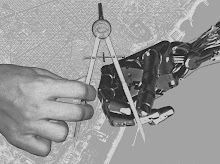
1. Integrating a dangerous area with the rest of a city in order to reduce the overall crime rate.
3...The physical disconnection of dangerous low income housing areas often feeds the crime rate within. By appropriately exposing an isolated area to the rest of the city, extremes in income tend to be infused by public inhabitance. Public space will later serve to increase the capacity of the city or at least allow an overcrowded city a chance to extend itself.
9........Retiro is a region in the north east of Buenos Aires that is know for its crude living conditions and has the leading crime rate within the city. After analyzing the area, it is clear that one of the reasons for its negative presence is because of its isolation due to an airport space, ocean port, train station and a highway that passes over its center. This separation from the rest of the city allows for more crime to consistently occur due to its little exposure and over crowded housing. These home made shelters are hazardous to the inhabitants and continue to grow haphazardly where space presents itself. With thorough investigation I believe that an intelligent revampification of this area would benefit permanently and would reduce the overall crime rate in Buenos Aires. My program would consist of designing a public park that will not only house modified housing units but also mediate the two extremes incomes that are present in this area. Currently there are many unused steel ship containers that sit along the shore and the outskirts of this region. By recycling these containers to make housing for the current residents, much of the area will be cleared up and most importantly cleaned up.






